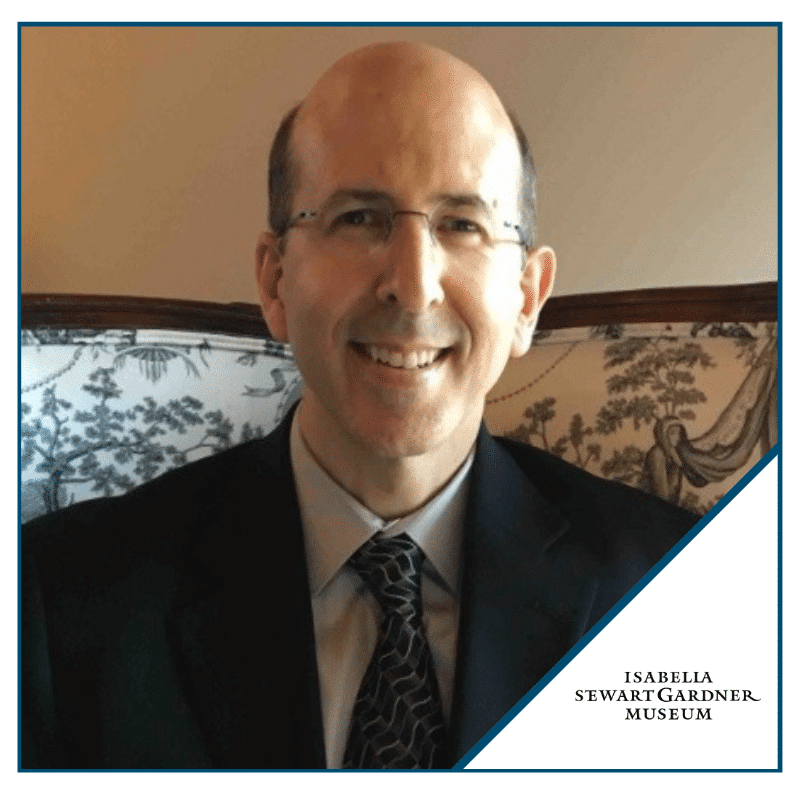The Keys to a Successful Chief Financial Officer and Chief Development Officer Partnership
Posted March 25, 2021
We recently spoke with Chief Financial Officers at a diverse range of nonprofits about how they successfully partner with their Chief Development Officers. Discover what they had to say...

Clifford Rust
Chief Financial and Administrative Officer at Isabella Stewart Gardner Museum
On the key to a successful CFO/CDO partnership…
A successful CDO/CFO partnership must be built on open communication, trust and transparency. I feel strongly that essentially everything undertaken in an arts organization involves and supports cultivation of one sort or another; as a result, Development and Finance touch all areas of the institution. That goes doubly for the Gardner Museum since operations, exhibition planning and administration all report through my position. Strong communication between the CDO and CFO ensures consistent messaging to a wide range of constituents, from staff, to visitors and the Board.
On navigating pain points..
Pain points need to be addressed head-on and generally stem from inconsistent communication. If the CDO and the CFO are aligned on both Development and Finance goals, then pain points should be relatively easy to address.
On the protocols and systems that best support collaboration..
Frequent, regular meetings between the CDO and CFO and between Development and Finance departments are key for healthy collaboration, as are basic financial controls and regular reports on revenue recognition. I also think it’s essential for the CDO to attend Finance Committee meetings and for the CFO to attend Development Committee meetings.
On collaborating in our now virtual world..
Virtual collaboration with our CDO has been seamless, mostly because our new CDO started at the Museum in July, after we had already pivoted to a mostly virtual model. As before the pandemic, I try to make myself readily available and prioritize Development concerns.
On looking forward..
Budgeting and planning for the next fiscal year has fallen into what is now a familiar routine: we will be presenting a preliminary budget to the Board in May divided into quarters and accompanied by at least two alternate scenarios, one of which will include another shutdown. We will continue to reproject the budget on at least a quarterly basis as we navigate the next fiscal year. In pre-pandemic world, we presented a single, annual budget in May and pegged the Museum’s performance to that fixed budget.

Timothy Barrett
Chief Financial Officer at Pine Street Inn
On the key to a successful CFO/CDO partnership…
Ongoing communications, honesty, and transparency. It has been critical for me to communicate to our advancement department where the finance gaps are and to listen to them about where the opportunities exist; then, together we can find synergy and commonality.
I often say that the Chief Financial Officer’s best friend is the Chief Advancement Officer because at a nonprofit, there are limited ways that you can increase income. It’s not like a for-profit corporation where you can simply sell more product – it’s really the advancement team that can be the game changer. So, I really value that partnership. And my approach has always been: if I can say yes to advancement’s idea and make something work, then why wouldn’t I?
On navigating pain points..
I think we’re fortunate to not have many pain points. I know that some organizations can experience a tension between advancement and finance when the CFO is putting on too much of an accounting hat, but we haven’t had this issue. If anything, the only challenge I would point to is when auditors have requested more documentation from our advancement department, and our team has had to partner with them to strengthen policies in support. For instance, during our recent campaign, we had to work with advancement to create a more structured documentation process regarding Donor-Advised Funds pledges. It may have felt tedious then, but at the end of the day, it was in the best interest of the organization.
On the protocols and systems that best support collaboration..
I would point to a couple things. First, during our campaign, we established a gift acceptance policy for how to handle non-cash or -stock donations. We had an informal policy for years, but the campaign illuminated the need to make it more formal.
Second, we have an ongoing, monthly process of reconciliation to ensure all records are accurate. We review all advancement activity as part of this process, and at the same time, the advancement team ensures that we are keyed in to their work, such as anytime they are submitting a proposal that isn’t a renewal.
Lastly, I have a standing monthly meeting with our Chief Advancement Officer. To be honest though, we often end up cancelling it because we are in such constant communication that we do not need it.
On collaborating in our now virtual world..
I think we adjusted pretty quickly. It’s interesting; the finance department is about a mile away from our main building so pre-COVID a lot of our communication was already remote by phone and email. As a result, it hasn’t been a tremendous difference or strain.
I think, more than anything—and this isn’t specific to the CFO/CAO partnership, but more about the impact of going virtual—it has provided major opportunity for the advancement team to connect with existing and new donors and to garner new levels of support.
On looking forward..
Our budgeting and planning process will continue to be impacted by COVID. Our programs are operating very differently today than they were pre-COVID, and in many ways, they’re changing permanently. We don’t have 365 men in our shelters now because of the need for social distancing, we’re conducting more cleanings of the facilities, and we have more staff – so, COVID is still a very real part of our life. To give you a sense of this impact: we’re a $70M organization, and for this fiscal year, we’ll spend around $10M in COVID-related expenses. And this increase in operating costs will continue into the new fiscal year.
I think there will be a long-term effect, too. The higher level of sanitation will continue, and even more impactful is how COVID has fundamentally changed how we think of shelters. Prior to the pandemic, on some of those especially cold nights, the shelters would become packed. But for public health and safety reasons, that has to change. I think we would be deeply disappointed if we came out of COVID and still had 365 beds in our shelter. At the same time, the city needs those beds, so what do we do? The answer is build more housing. We saw that throughout COVID, of the people we were able to place in housing, only 1-2% contracted the virus, whereas in the shelters, it was over 30% in the early months. So, the pandemic has really underscored how critical housing is – and this deepened commitment to housing will naturally be a part of our budgeting and planning moving forward.

Rob Kuklewicz
Chief Financial & Operations Officer at St. Mark's School
On the key to a successful CFO/CDO partnership…
I believe that the ability to work collaboratively is one of the key components in ensuring the success of the partnership between the roles. Much of the work within the development office as overseen by the CDO is tied closely to the work in the business office, especially as it relates to the logistics after a gift is received. There are so many other facets where the lines intersect, from event planning and facilities logistics to pro forma budget building and ad hoc support for donor questions.
I also believe in the importance of the shared vision – that the work of the CDO and their team is integral in not only the financial health of the organization but of its overall sustainability moving forward. Understanding the value of the relationships built by the CDO and their team allows you to better understand the critical nature of this role. By communicating and sharing the goals across departments, we are better able to ensure the success of each objective within these goals. If the CFO is able to listen to these objectives and work to provide support needed, this goes a long way in ensuring the institution’s success.
On navigating pain points..
Communicating and working as a team through any difficult process or decision is extremely important. If an issue is present which must be resolved, I believe the collaboration is again key. Listening with the goal of understanding the true nature of the challenge is also important. Working together with the CDO to also understand which outside experts to pull in in order to find the solution is imperative. Working with Development Guild has provided the added guidance and technical expertise to achieve goals and assist in targeted deadlines, which is necessary as we move through the phases of our current bricks and mortar campaign project.
On looking forward..
This past year has presented a host of challenges we could not have imagined in both our professional and personal lives. As a CFO, my role as an active participant in fundraising is very limited, however the goals remain the same – we work collaboratively to reach the organization’s goals and one of our jobs is to ensure the accounting is handled accurately. I also see a more active role in working with the CDO to provide support to their team in terms of questions from potential donors around the financial aspects of the School. Sometimes, I have noticed that certain questions may dig much deeper than what can be found in the Form 990. I also see the shift on the horizon between how we accomplished what was needed in the moment during the pandemic, and the anticipation and concerns around what the “new normal” will look like when we do eventually return to a post-COVID world. Our world has changed, and I see this as an opportunity. I believe we will look at what can be added back versus what was parsed out or shifted and should remain that way. I’m eager to be a part of this transition and look forward to continuing to work collaboratively with the CDO and their team on our next set of initiatives.

John Riley
Vice President, Finance & Human Resources at Clayton Christensen Institute
On the key to a successful CFO/CDO partnership…
The key to a strong partnership between a CDO and a CFO (as with any other professional relationship) is excellent communication. Both CDO and CFO need to understand the other’s priorities, needs, and expectations. These two professionals are jointly responsible for providing the support and resources that fuel the organization’s work, so it is imperative that they be on the same page at all times.
On navigating pain points..
So many key conversations in the finance-development interaction in nonprofit organizations revolve around timing of execution, proper messaging, and shared expectations… from the perspective of both parts of the organization. A CDO needs to understand the financial forecast of the organization, the timing and phasing of the organization’s key program serivices, and its cash-flow needs so they can, in turn, build that information into the organization’s development plan and into its messaging to donors. In turn, the CFO needs to understand the development pipeline and have realistic expectations for revenue projections, which factor into key organizational decisions.
On the protocols and systems that best support collaboration..
As CFO, I participate in the Institute’s weekly Senior Development meeting, which includes our CEO, Board Chair, CDO, and Chief of Staff, because it is important for me to know the status of key development initiatives… and I want to advise them of important issues on the finance front. I have also jointly worked with the CDO to develop our reporting systems so that they provide both financial and fundraising data in an integrated, systematic manner.
On collaborating in our now virtual world..
For all of us, the hardest part of working remotely has been not being able to “pop in” to someone’s office for a quick chat. So much important information is shared in those quick interactions in our hallways and offices, including quick updates on emerging issues. When we are all working remotely there is a natural hesitancy to interrupt a colleague at their home office. The key to overcoming this challenge is to create a comfort level in reaching out to each other at any time. You have to replace those important in-person interactions with calls, emails, and texts, because information sharing is one of the most important elements of an effective team.
On looking forward..
Because of the uncertainly caused by the pandemic, I have found that we have had to shorten our planning horizon. While it is still critical to have long range plans, we have had to be more flexible in setting deadlines and expectations. 2020 and the beginning of 2021 have certainly taught us that our entire operating environment can change in a moment. That has translated into our creating a more static baseline budget with the understanding that there may be significant deviations from that budget that we could not have anticipated. The organization has to develop a comfort level with that uncertainty.

Steve TenBarge
Finance Manager at Friends of the Public Garden
On the key to a successful CFO/CDO partnership…
The leaders of Finance and Development need to get along well while having trust in each other’s competence and dedication to the mission.
On navigating pain points..
If the relationship is working, there aren’t any pain points because the leaders are able to work through problems together. If the relationship is not working as well as it should, then pain points can happen at any time.
On the protocols and systems that best support collaboration..
I established a robust monthly and year-to-date reconciliation process with Development and have them more involved in the annual audit.
On collaborating in our now virtual world..
Like many other companies, communication by email, phone and Zoom have replaced in-person interactions and it has been working surprisingly well. Since I am the only one going into the office on most days, I process the mail and check donations and electronically feed the supporting documentation to our Development team.
On looking forward..
For 2021 I implemented a two-version budget process:
- Essential Services – reflecting economic conditions similar to 2020
- Expanded Services – reflecting a somewhat more optimistic scenario
We don’t yet know if we will take this approach in future years.



